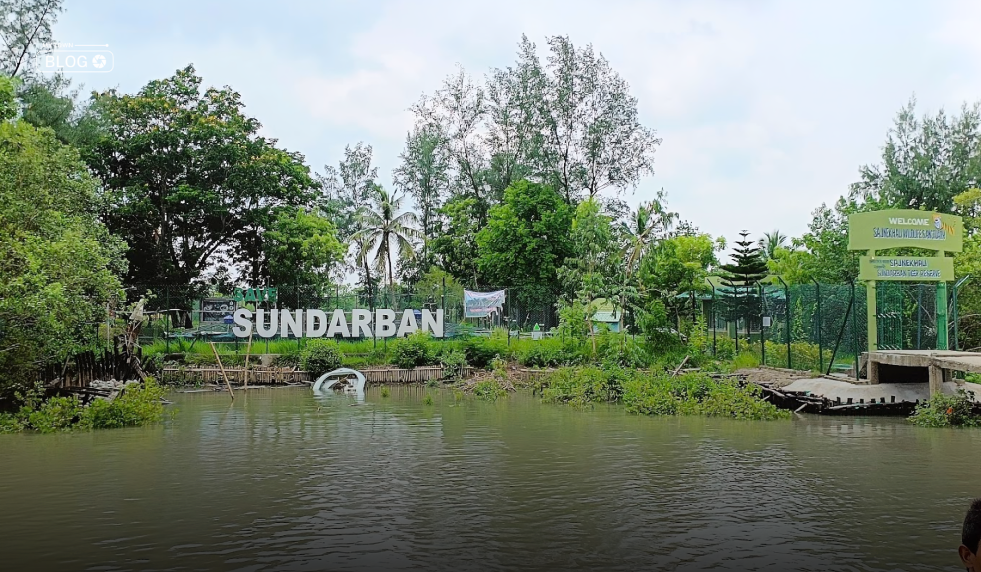Hidden deep in the heart of the Sundarbans is the Sajnekhali Wildlife Sanctuary, West Bengal’s most hidden gem of an attraction. This is a nature lover’s, bird watcher’s, and nature tourism’s heaven on earth. While not touristy and lesser known than the majority of tiger reserves, it compensates in abundance with its peaceful backwaters, expansive mangrove wetlands, and peaceful wildlife experiences.
Here we discover all you want to know before you book your visit—the where, the when, how much a ticket will cost, and what you will get when you arrive.
Where is Sajnekhali Wildlife Sanctuary Located?
Sajnekhali Wildlife Sanctuary lies in the northeastern corner of the Sundarbans, within the South 24 Parganas district of West Bengal. It lies at the confluence of the rivers Matla and Gumdi and hence provides an ideal ecosystem for aquatic as well as terrestrial animals. It extends over an area of 362 square kilometers and comes under the Sundarbans Biosphere Reserve, which is a UNESCO World Heritage Site.
This area comes under the jurisdiction of the West Bengal Forest Department. It is a major nesting site for numerous bird species and an observation platform for scientists researching mangrove systems.
- Coordinates: 22.1066° N, 88.7791° E
- Kolkata to Sajnekhali Wildlife Sanctuary: ~130 km (4 to 5 hours depending on your means of transport)
How to Reach Sajnekhali Wildlife Sanctuary
Sajnekhali trip is somewhat adventurous in character, yet it is such that you wouldn’t want to miss it. You will have to cross rail lines, countryside roads, and rivers to enter the sanctuary. If you need easy travel, you could go as a group or hire a Sundarbans package tour.
Also Read: Ramnabagan Wildlife Sanctuary: Timings, Location, and Attractions
Travel Route:
- Train: Take a local train from Kolkata’s Sealdah Station to Canning. It would cost you around 1.5 hours.
- Road: Take a shared auto or taxi from Canning to Gadkhali Jetty, 30 km from there.
- Boat: Take a motorboat from Gadkhali to Sajnekhali via Gosaba and Pakhiralaya. It is a journey by boat for about 1.5 to 2 hours.
If you’re planning to stay in Sundarbans for more than one day, then you can hire a boat tour of Sajnekhali, Sudhanyakhali, and Dobanki watchtowers, which is an option to go further with fewer troubles.
Timings of Sajnekhali Wildlife Sanctuary
It is open each day of the week, Saturday and Sunday too, and holidays as well, so it would be convenient for you to arrange your trip.
- Opening times: 8:00 AM to 6:00 PM
- Safari timing: Morning (8:30 AM to 12:30 PM) and Afternoon (1:00 PM to 4:00 PM)
- Last entry: Usually till 4:00 PM for day tourists
Take the early morning safari for optimal possible chances to view birds and animals as the forest wakes up.
Entry Fees and Permits
Sajnekhali is one of the more budget-friendly wildlife attractions in India. These are the fees in detail:
- Indian Nationals: ₹60 per person
- Foreign Nationals: ₹200/person
- Still Camera: ₹100
- Video Camera: ₹300
- Boat Safari: ₹800 to ₹2000 based on boat type and duration
- Guide Fee (optional but well worth it): ₹300–₹500 for half-day
Permits can be booked through the Sajnekhali Forest Range Office, usually if you are traveling in a package tour.
Make sure that you carry your ID—passport or Aadhar—to take for entrance and permits.
Best Time to Visit Sajnekhali Wildlife Sanctuary
The best time to visit Sajnekhali is from November to March when the air is cooler and the forests are alive with activity.
| Season | Weather | Experience |
| Winter (Nov–Feb) | Pleasant, 15°C–25°C | Great for safaris and birdwatching |
| Summer (Mar–Jun) | Hot & humid, 30°C–42°C | Wildlife less active, not ideal |
| Monsoon (Jul–Sep) | Heavy rains, flooding risk | Boats may not operate; avoid travel |
This period also attracts migratory birds, making it a birdwatcher’s delight. Rare sightings of birds like purple herons, open-billed storks, and black-capped kingfishers are common.
What to See Inside Sajnekhali Wildlife Sanctuary
Though with fewer chances of a tiger sighting, still there is much to find out and witness inside Sajnekhali:
Top Destination Points:
- Sajnekhali Watch Tower – Great place for forest vistas and wildlife observation
- Mangrove Interpretation Centre – Gives information on the vegetation, wildlife, and ecological significance of the Sundarbans
- Bird Sanctuary – Is home to more than 120 species of birds like sandpipers, white-bellied sea eagles, and whistling teals
- Crocodile Pond – Observe marsh crocodiles basking in the sun
- Turtle Breeding Centre – A small but fascinating spot for kids and nature-students
- Bring binoculars and a camera—you’ll regret it if you don’t!
Wildlife and Birdlife You Can Spot
While it’s not a full-fledged tiger reserve, Sajnekhali still offers a chance to get close to nature:
Common Birds:
- Black-capped Kingfisher
- Egrets
- Herons
- Crested Serpent Eagle
- Pond Heron
Common Animals:
- Spotted Deer
- Wild Boars
- Fishing Cats
- Monitor Lizards
- Marsh Crocodiles
Over 70% of the bird species found in the Sundarbans can be seen in or around Sajnekhali.
Where to Stay Near Sajnekhali
You are not going to find five-star hotels in Sundarbans, but you do have clean, comfortable, and eco-friendly accommodations where you can stay overnight.
Recommended Stays:
- Sajnekhali Tourist Lodge – West Bengal Tourism operates this lodge; basic rooms, good location
- Eco-Village Resorts at Gosaba and Dayapur – Quiet spots, home-cooked meals
- Homestays – Locals welcome guests to stay home and enjoy home-cooked Bengali food
Book in advance, if you are visiting during peak season (December to February).
Things to Know Before You Go
Before you pack your bags, keep these quick tips in mind:
- Before you even start packing suitcases, keep these useful facts in mind:
- Carry cash—credit points and ATMs do not exist at remote locations
- Dress lightly, insect repellent, sunscreen, and bottles of water
- Go green with action—noiseless and not plastic
- Avail a registered local guide to have the maximum experience
- Thin mobile network available—use as a digital detox
Conclusion
Sajnekhali Wildlife Sanctuary is more than just a weekend escape—it’s a breath of fresh air, far from the noise of city life. Whether you’re a bird enthusiast, a nature photographer, or just someone seeking peace, this place has something beautiful to offer. Take the boat, follow the trails, and you might just leave with stories that last a lifetime.
FAQ’s
Is Sajnekhali Wildlife Sanctuary safe for tourists?
Yes, it is very safe. Obey local regulations, do not venture out alone, and stay with your group or guide if you plan on going on a boat tour.
Do I have to book ahead at the sanctuary?
Yes, you can book on the spot, but accommodations and boat safaris have to be booked ahead when it’s peak season.
What type of food is there nearby Sajnekhali?
Primarily local Bengali food—rice, fish curry, vegetables. Continental and vegetarian meals are available in some eco-resorts.
Is it worth visiting if I’ve already been to other tiger reserves?
Absolutely. While it’s less about tigers, it’s a unique mangrove forest experience with tranquil rivers and rich birdlife.








